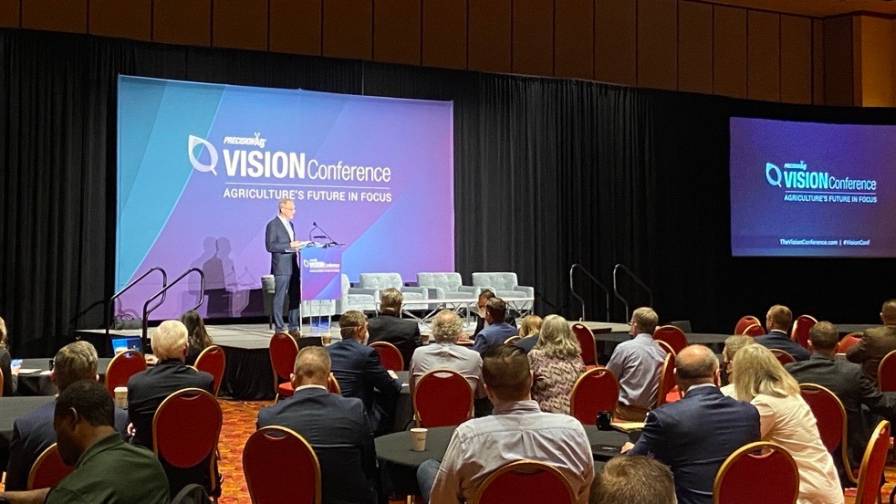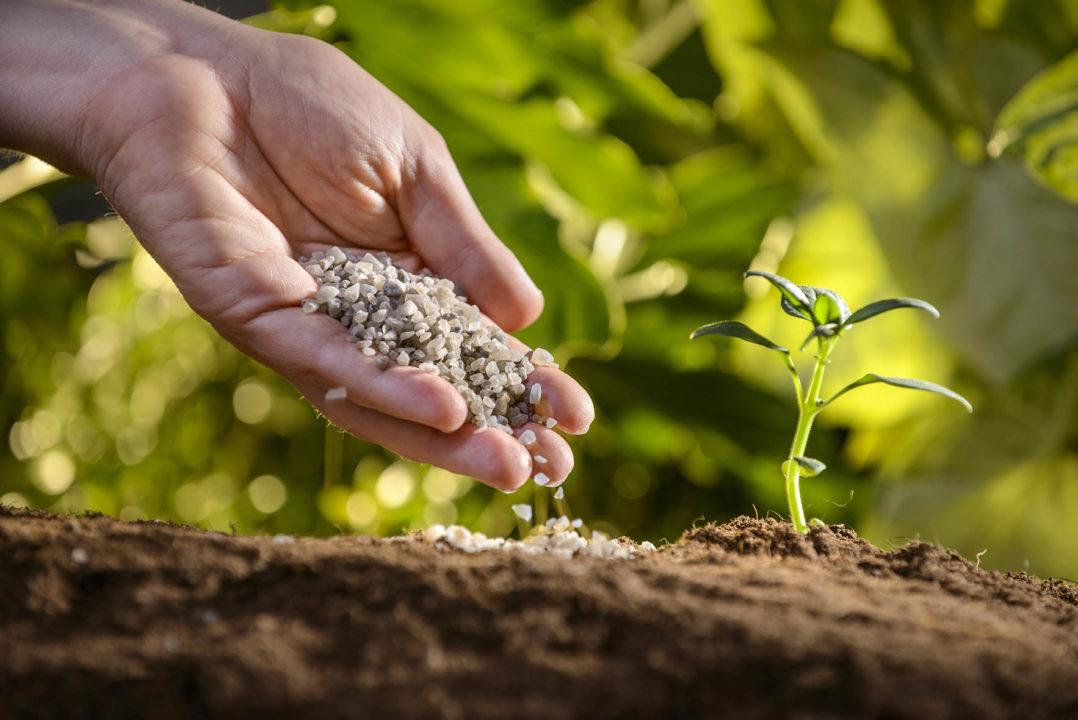The Voices Who Are Driving Change Convened at 2022 VISION Conference to Transform Agribusiness and Address Emerging Technology and Trends

Meister Media Worldwide Corporate Content Director Richard Jones addresses attendees at the 2022 VISION Conference in Phoenix, AZ.
After two years of being apart, the 2022 VISION Conference once again brought together leaders on the forefront of agriculture and technology integration to engage in a conversation about the future for farming and food. Nearly 200 participants from around the U.S. and Canada gathered for the fifth year of the conference January 18 -19, in Phoenix, AZ, to dive deep into important topics related to regenerative agriculture, automation, connectivity, and transparency.
“This was our first VISION conference since January 2020 and we were thrilled by the number and level of the attendees and the quality of the discussion,” said Richard Jones, Meister Media Worldwide Corporate Content Director and VISION Conference Chair. “It was an opportunity for people to get back together to network and talk about the important issues that are impacting the full agribusiness food value chain. Being able to finally engage in person moved the needle exponentially more than we have all been able to accomplish with the past two years of Zoom calls and e-mails.”
The conference kicked off with a keynote address by Brett Sciotto, Aimpoint Research, who set the stage with his latest research on how the farmers of the future will meet next-generation demands for food. “Traceability, transparency and sustainability are table stakes for the future of the industry,” said Sciotto, who sees functional foods, or food as medicine, as one of the biggest trends for the next decade.
When it comes to regenerative agriculture it is clear there are many opportunities, particularly with all the activity around carbon programs that could reward farmers for their sustainable practices. Foundation for Food & Agriculture Research AgMission Program Director Allison Thomson said agriculture has the potential to be a powerful climate solution, but research and data are critical to make that happen.
The worsening labor shortages in agriculture are pushing robotics forward at an even faster pace. “The goal is to solve the problem of labor,” says Paul Welbig, Raven Industries, who spoke on a panel at the conference. “We describe it as a path to autonomy and we’re on that path.”
Representatives from three of the largest farm equipment manufacturers shared their views on the precision vision for the future. “The stars are aligned,” said Deanna Kovar, Vice President, Production & Precision Ag Production Systems, John Deere. “What is good for sustainability on the farm is also good economically.”
Kovar was joined by Kurt Coffey with Case IH North America and Todd Stucke, Kubota, who also expressed optimism for the direction the industry is taking on sustainability and autonomy.
Teddy Bekele, Chief Information Officer for Land O’ Lakes, was keynote speaker for day two of the conference and his message drove home the point that for farming and food moving into the future, data is king.
“Data is key to everything in modern and transformative agriculture. Data makes us relevant,” said Bekele. But there are four major barriers to being able to collect and use the right data – interoperability, tech savvy labor, cyber security, and broadband access in rural areas.
Importantly, Bekele reminded conference attendees that people are the most important piece in the digital transformation puzzle, not technology.
The current state of blockchain for agriculture was also explored during the conference with a focus on how it can provide value by helping fill traceability and transparency needs.
The VISION conference wrapped up with a look at the future of food with one key takeaway being that brands being marketed as sustainable are getting a nearly 30% price premium compared with conventionally marketed products, and that is only expected to grow.
The VISION conference may have concluded for 2022, but the conversation will continue. “This is two days in January that we spent together, but we intend for VISION to be a year-round conversation,” Jones said.





